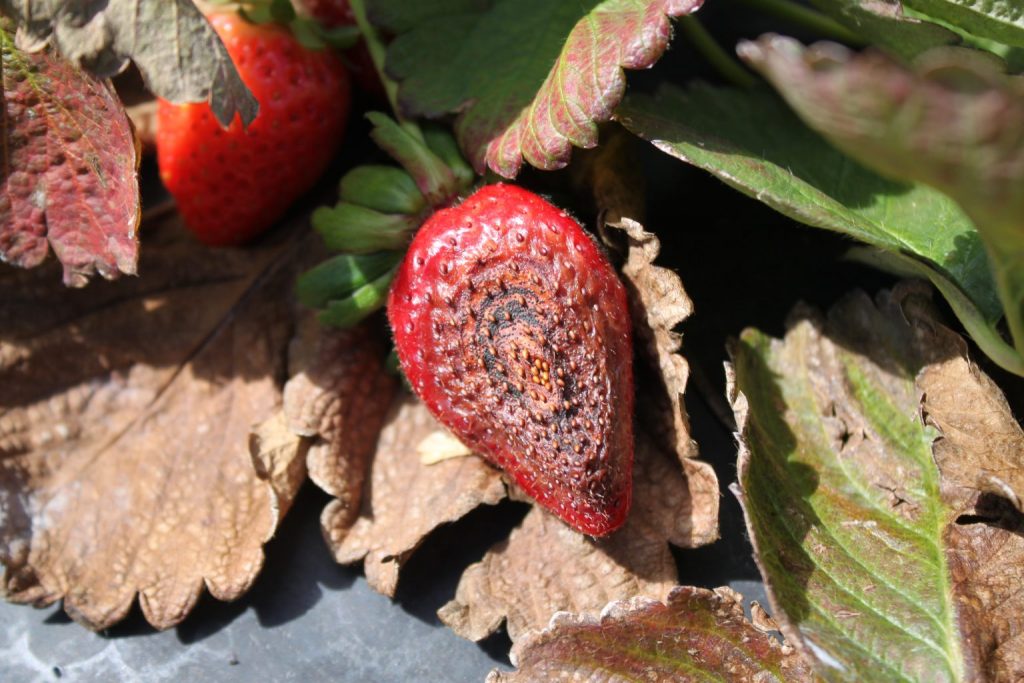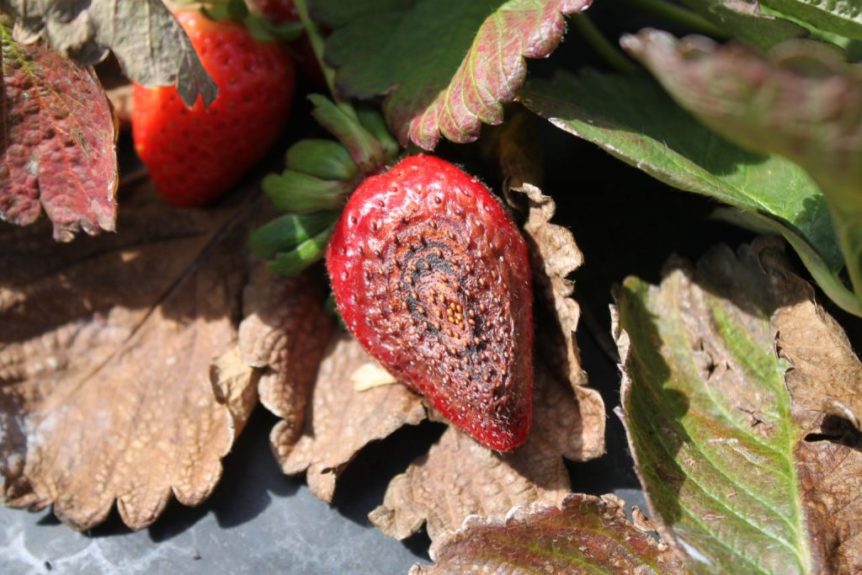
By Clint Thompson
Southeast strawberry growers’ first line of defense against Neopestalotiopsis is to plant clean plants. For those producers that have the disease in their fields, there are management options available, according to Phil Brannen, University of Georgia Cooperative Extension fruit disease specialist.
“Depending on the amount of infection you have, if it’s a relatively low level, you can rogue plants. What I would tell people to do is really take as much as the whole plant out and take it out of the field. Get rid of it. Keep it from spreading,” Brannen said. “Of course, an active spray program also. We’ve talked about some of the things, mainly a spray program that’s based on Thiram, Switch and some of the DMI fungicides like Rhyme and those types of products. They’re going to have to spray.”
Disease Background

Neopestalotiopsis has been a danger to strawberry plants every year since it was first discovered during the 2018–19 season on five farms in Florida. The disease’s initial discovery was attributed to one nursery source in North Carolina. More than 20 farms experienced the disease during the 2019–20 season after it was attributed to two nursery sources early in the season in North Carolina and Canada.
It can lead to severe leaf spotting and blighting under favorable weather conditions, specifically during extended periods of wetness.
“If you get to a certain point, then it becomes and I don’t know what the math is if it’s worthwhile to continue to spray and put an effort into it, at some level, if you’re going over 50% to 60% loss and you’ve got plants that are dead or dying in the field, you may just have to walk away from it,” Brannen said. “That’s just the reality.”










